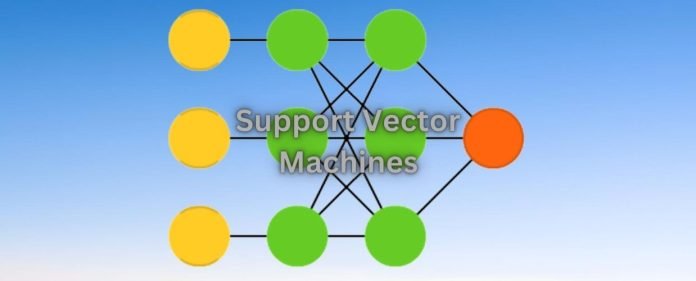In the rapidly evolving landscape of artificial intelligence and machine learning, Support Vector Machines (SVMs) are a powerful and versatile paradigm for executing robust and efficient classification tasks. These remarkable algorithms are celebrated for their capability to delineate optimal decision boundaries within complex data landscapes, rendering them indispensable tools for various applications spanning from image recognition to medical diagnosis. This comprehensive exploration delves deep into the realm of Support Vector Machines, shedding light on their foundational concepts, functioning principles, diverse applications, challenges, and the profound transformative influence they exert on the classification domain.
Understanding the Core Tenets of Support Vector Machines (SVMs)
In the dynamic machine learning arena, Support Vector Machines (SVMs) are a significant component of the supervised learning family, predominantly employed for classification and regression tasks. It shines when segregating data into distinct categories while optimizing the margin between disparate classes. At the heart of SVMs are the “support vectors” – pivotal data points closest to the decision boundary – which wield considerable influence in delineating the optimal separation.
Unpacking the Essential Notions of SVMs
When understanding SVMs, it’s important to unpack some essential notions. One key concept is the margin, the distance between the decision boundary and the closest data points.
- Hyperplane: In SVMs, the overarching goal is to identify a hyperplane that impeccably separates data points from different classes. This hyperplane, characterized by the maximum margin, effectively mitigates the risk of erroneous classification.
- Margin: The margin within SVMs quantifies the space between the hyperplane and the nearest support vectors. A wider margin signifies superior generalization capability and enhanced resilience when faced with unseen data.
- Kernel Trick: SVMs boast the remarkable ability to proficiently manage non-linear data by utilizing a kernel function. This function facilitates data mapping into a higher-dimensional space, where achieving a linear hyperplane separation becomes feasible.
The Inner Mechanics of SVMs: Embarking on a Classification Odyssey
Support Vector Machines adhere to a systematic protocol for classification.
- Data Points: The first step in this process is to gather a set of data that has been carefully labeled and organized. Each piece of data is assigned to one of two categories, and this categorization has been done with great attention to detail and accuracy.
- Feature Mapping: In some cases, it may be necessary to use a kernel function to transform the data into a higher-dimensional space. It can be beneficial when dealing with non-linear data, allowing for more accurate linear separation.
- Optimal Hyperplane: Support Vector Machines are machine learning algorithms that aim to identify the hyperplane that maximizes the margin between classes. To achieve this goal, it employs a loss function that is carefully optimized while taking into account the impact of the support vectors.
- Class Prediction: Novel data points are seamlessly allocated to one of the classes based on their position concerning the hyperplane. New or previously unseen data points are quickly and effortlessly assigned to one of the classes based on their positioning about the hyperplane.
Applications of SVMs
One of the primary applications of SVMs is in classification tasks, where they can effectively separate data points into different categories based on their features.
- Image Classification: SVMs are pivotal in image recognition tasks, effectively categorizing images into various classes with impressive precision. This capability assumes critical significance in autonomous driving, medical imaging, and facial recognition domains.
- Text Classification: Within natural language processing, it plays a pivotal role in categorizing text data. This prowess contributes to sentiment analysis, topic classification, and spam filtering. Organizing documents, emails, and social media content is seamlessly enhanced.
- Bioinformatics: SVMs emerge as crucial tools in bioinformatics, facilitating protein structure prediction, gene expression analysis, and disease classification. These applications enable researchers to unravel biological phenomena at the molecular level.
- Anomaly Detection: The capacity of SVMs to detect anomalies within data is harnessed in identifying deviations from anticipated patterns. It is invaluable in fraud detection and network security, effectively pinpointing rare events that might indicate fraudulent activities.
Challenges Inherent in SVMs
Despite their usefulness, SVMs also come with some challenges. One such challenge is selecting the appropriate kernel function, which can significantly impact the model’s accuracy.
- Kernel Selection: Choosing an appropriate kernel function presents a challenge, as distinct kernels are better suited for different types of data distributions. The seed selected profoundly impacts the model’s performance and ability to generalize effectively.
- Scalability: In certain instances, SVMs encounter scalability concerns when dealing with vast datasets or high-dimensional feature spaces. The optimization process becomes computationally intensive, necessitating combining optimization techniques and parallel computing.
- Interpretability: Although SVMs yield robust predictions, the intricacies of their decision boundaries can prove complex and arduous to interpret. It challenges understanding why specific predictions were made, a crucial aspect in applications like healthcare and finance.
Conclusion
In summation, Support Vector Machines (SVMs) stand as a pivotal milestone in classification. Their ability to carve out optimal decision boundaries within intricate data landscapes propels them into a central role across diverse applications. From the type of images to diagnosing medical conditions, it seamlessly permeates various domains, heightening the precision and efficacy of classification tasks. While challenges persist, the potential of SVMs to reshape industries and revolutionize the classification field is incontrovertibly remarkable.
In an era where pinpoint classification holds paramount importance, Support Vector Machines’ ongoing evolution continues redefining the boundaries of artificial intelligence. This ongoing journey of effectively classifying data points is a testament to the potent synergy between technology and the art of optimal decision-making, irrevocably altering the panorama of AI-powered classification.



